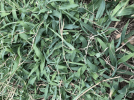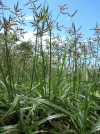SasquatchTortoise
Active Member
I've beat this question down already, but I thought I'd try one more time.
There have been some grasses I have tried to find the safety of, but without luck
1. I believe this to be finger grass

2. Blue Grama (Bouteloua gracilis)
3. Indian/Wood grass (Sorghastrum nutans)
4. Inland Sea Oats (Chasmanthium latifolium)
Does anyone know the safety of these for a sulcata? Thanks
There have been some grasses I have tried to find the safety of, but without luck
1. I believe this to be finger grass

2. Blue Grama (Bouteloua gracilis)
3. Indian/Wood grass (Sorghastrum nutans)
4. Inland Sea Oats (Chasmanthium latifolium)
Does anyone know the safety of these for a sulcata? Thanks


